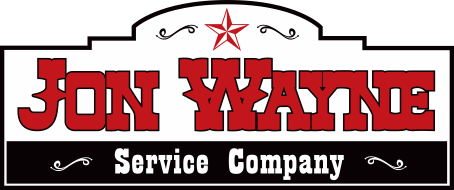2025 HVAC Refrigerant Changes: What You Need to Know

As of 2025, some refrigerants will be phased out of the market and replaced with a more environmentally friendly option. Homeowners planning to repair or purchase a new indoor comfort system in 2025 will need to quickly decide whether to grab one of the old models (before they’re all gone) or opt for the new units being released.
Specifically, R-410A refrigerant will be phased out and replaced by newer, more eco-friendly A2L refrigerants (such as R-32 refrigerant and R-454B refrigerant).
These changes align with environmental regulations and the push for more sustainable cooling solutions.
Still a bit lost? You’ve come to the right place for a comprehensive overview of refrigerant changes in 2025.
Keep reading to get more details on:
- Why HVAC refrigerants are changing
- What refrigerants are being phased out and why
- The new generation of refrigerants
- How this impacts homeowners and HVAC systems
- Preparing for the change: what homeowners should do
Understanding these 2025 updates can help homeowners make informed decisions about their HVAC systems.
Upgrade Your System for the Future—Call Jon Wayne Now!
Don’t wait any longer to update your air conditioning system to the new, more efficient models. Jon Wayne can help you make the switch. We get the job right the first time, so you don’t have to deal with costly repeat labor.
Why HVAC Refrigerants Are Changing
In 2020, the American Innovation and Manufacturing (AIM) Act was passed. This law requires a transition from using hydrofluorocarbons (HFCs) across many applications — including HVAC. The AIM Act requires the reduction of HFCs by 85% by 2036.
The United States is not alone in this initiative. The Kigali Amendment is an international agreement aiming to reduce HFCs by 80%-85% by 2047.
The Environmental Protection Agency (EPA) responded to this Act by setting a 750 global warming potential (GWP) limit for air conditioning for 2025 and beyond. As a result, R-410A, which has a GWP of 2,088, cannot be used in the manufacturing of new equipment.
Why is all this happening? Refrigerants can contribute to climate change in several ways. Many refrigerants produce significant greenhouse gas emissions. Transitioning to refrigerants with lower global warming potentials (GWPs) is an effort to reduce the environmental impact.
What Refrigerants Are Being Phased Out and Why
Several refrigerants are being replaced. Here’s why:
- R-22 refrigerant. R-22, also known as Freon 22 or HCFC-22, was a common refrigerant used in air conditioners and heat pumps. However, due to its ozone-depleting properties, the production of R-22 was banned by the Montreal Protocol Act in 2020.
- R-410A refrigerant. The R-410A phase-out is a 2025 initiative in the United States. This refrigerant has been targeted for its high GWP, making it less sustainable for long-term use.
Though effective, these refrigerants are classified as having significant environmental downsides. This begs the question, what are the alternatives?
The New Generation of Refrigerants
The new options being introduced are A2L refrigerants. This classification is considered semi-flammable, which requires enhanced safety protocols, but offers significantly lower GWP.
- R-32 refrigerant. This non-blended refrigerant is already used in other parts of the world. It is known for its energy efficiency and lower environmental impact. It can be added to a compatible system without complete recovery, helping to keep repair costs lower.
- R-454B refrigerant. R-454B is a blended refrigerant. Its advantage is it has the lowest GWP out of all current refrigerant options available. However, if a system develops a leak, it has to be recovered, reclaimed, and then recharged with 100% virgin refrigerant to ensure it maintains the proper blended ratio
All of these refrigerants perform better environmentally and can enhance HVAC system efficiency. However, they require updated equipment and proper handling as no A2L refrigerant is a direct replacement for legacy refrigerants. You may have to weigh whether it is better to spend a little more on a replacement to get something that will be more energy efficient and backed by a longer warranty.
How This Impacts Homeowners and HVAC Systems
Some of the practical implications of these changes for homeowners are:
- Increased equipment costs. New refrigerants may require upgraded systems compatible with A2L refrigerants.
- Limited availability of older refrigerants. R-410A and R-22 refrigerants will become increasingly scarce and expensive.
- Improved efficiency. Systems using new refrigerants can reduce energy consumption and lower utility bills.
If your unit is old and requires frequent repairs, it might be time to weigh the long-term benefits of upgrading to a system compatible with new refrigerants or replacing your system with a legacy system while current supplies last.
Preparing for the Change: What Homeowners Should Do
Here are some actionable steps you can take to navigate these refrigerant changes:
- Schedule a professional HVAC inspection to assess system compatibility with new refrigerants.
- Consider upgrading to a newer system if your current one uses R-410A or R-22.
- Stay informed about refrigerant regulations and upcoming changes to make proactive decisions.
- Remember the importance of regular professional maintenance to ensure your system operates efficiently and safely during this transition period.
Prepare for 2025 HVAC Changes — Contact Jon Wayne Today!
Regardless of whether you are ready to forge ahead with us into the future with cutting edge technology bringing your air conditioning system into 2025, or you are wanting what was tried and true for the last 20 years, while supplies last, the choice is yours.
Jon Wayne is here to help you decide what is best for you and your family. We have NATE-certified technicians, so you know you're in the hands of qualified experts that can help you make an informed decision and with 200 trucks on the road, you'll get the fast response time you deserve.

